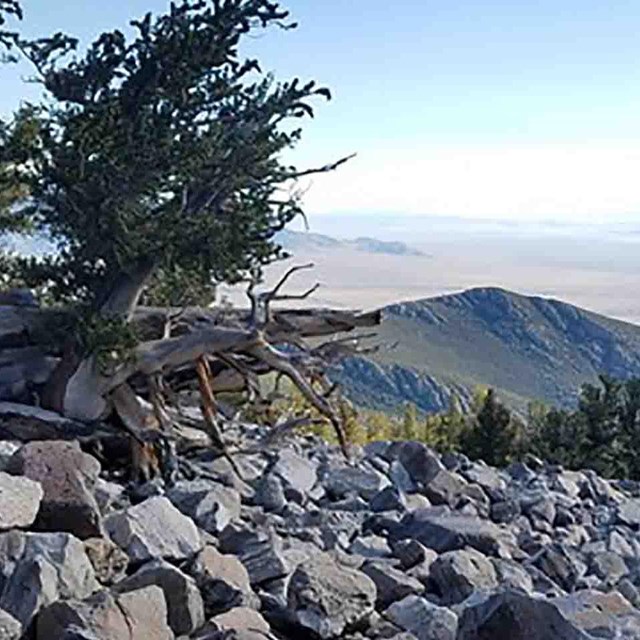
High-elevation pines, including whitebark pine, limber pine, and bristlecone pine, can be found up and down the full range of the Rocky Mountains. They must withstand harsh growing conditions, including cold temperatures, severe winds, and a short growing season.
These pines play important roles where they grow, regulating processes such as snowmelt, stream flow, and soil stabilization. They provide habitat and food for birds and mammals; their large and nutritious seeds are prized by wildlife including Clark's Nutcrackers, black bears, and ground squirrels. Other wildlife use trees for shelter. Whitebark pine canopies support lichens and other plants.
All western species of five-needle white pines are threatened by an invasive pathogen that causes the disease white pine blister rust. The threats of blister rust and mountain pine beetle coupled with projections of increased temperature and changes in type and timing of precipitation heighten the importance of monitoring white pine forests.
Check out this video on monitoring high-elevation forests in the Sierra Nevada.
-
 Mojave Desert NetworkWhite Pine
Mojave Desert NetworkWhite PineGreat Basin National Park contains over ten thousand acres of Great Basin bristlecone pine and limber pine forest.
-
 Greater Yellowstone NetworkWhitebark Pine
Greater Yellowstone NetworkWhitebark PineWhitebark pine is a high-elevation tree of the northern Rocky Mountains and the Pacific Northwest.
-
 Klamath NetworkWhitebark Pine
Klamath NetworkWhitebark PineWhitebark pine's large and nutritious seeds are prized by wildlife including Clark's Nutcrackers, black bears, and ground squirrels.
-
 Upper Columbia Basin NetworkLimber Pine
Upper Columbia Basin NetworkLimber PineThroughout the West, limber pine is suffering extensive, heavy mortality due to white-pine blister rust, an invasive exotic fungal disease.
-
 Sierra Nevada NetworkHigh-elevation Forest
Sierra Nevada NetworkHigh-elevation ForestHigh-elevation subalpine forests define the upper limit of tree growth in the Sierra Nevada.
-
 North Coast and Cascades NetworkWhitebark Pine
North Coast and Cascades NetworkWhitebark PineWhitebark pine is a keystone species of high-elevation ecosystems in western North America.
Last updated: January 11, 2022
